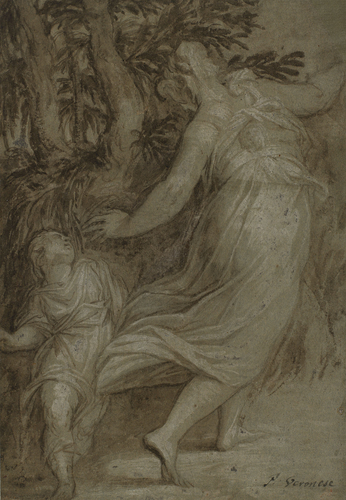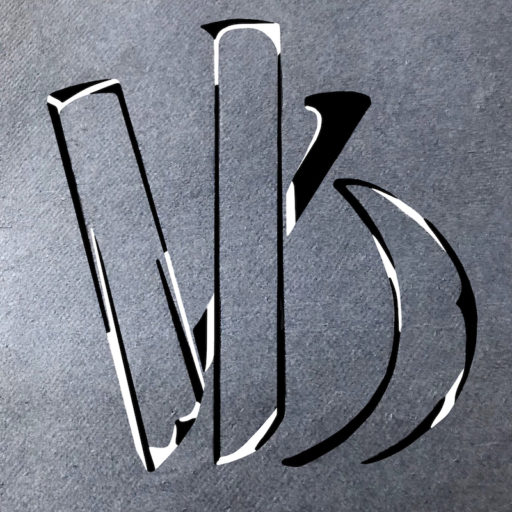
Artist | Andrea Schiavone (c.1500-1563)
Title | A Woman Fleeing through a Wood
Date | First half of the 16th century
Medium | Brush and ink on blue paper, with white heightening
Dimensions | 285 x 198 mm
Institution | Royal Collection Trust, Windsor
Credit Line | Royal Collection Trust / © Her Majesty Queen Elizabeth II 2021
Theme | Composing Space and Creating Action
Museum number | RCIN 906700
Created during the first half of the sixteenth century, Andrea Schiavone’s (ca. 1500–1563) drawing portrays a young woman running through a wood as she turns her head to look at a young child closely following behind. Schiavone’s drawing seems to have been influenced by the Mannerist style employed by Girolamo Francesco Maria Mazzola, more commonly known as Parmigianino (1503–1540). Previously it has been speculated that Schiavone was a pupil of the renowned painter and printmaker, however this is unlikely. Nevertheless, Schiavone would have been familiar with Parmigianino’s drawings, as evidenced by the refined sensuality of Schiavone’s style. Despite these resonances, in his monograph on Schiavone (1981), Francis Richardson questions the attribution to the artist, arguing instead that it is a composition by Giovanni Battista Zelotti (1526–1578), relating the figures to those in his villa frescos. Chiaroscuro in the flowing drapery and twisting movements, created by contrasts in the dark ink and touches of white heightening against the blue paper, further illustrates this quality. Schiavone’s rough, expressive strokes in the treatment of the drapery and the trees in the background, coupled with the dynamism of the figures’ active poses, seems to inform his signature loose painting style. Although the subject of the drawing is ambiguous, the woodland setting, flowing drapery, idealised female body and dynamic pose together suggest that the drawing was inspired by scenes from antiquity or mythology, both of which were popular sources during this period.
IB
